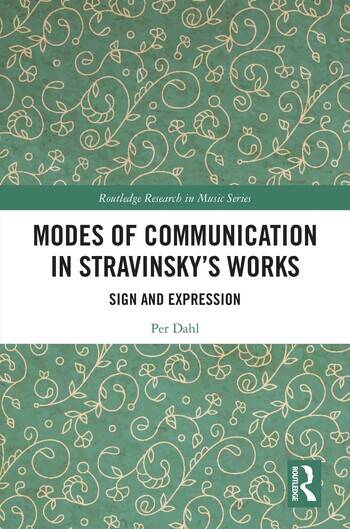NEWS
Summer conferences
29.05.2022
Hopefully, we can meet again in person during conferences this summer. I am booked for four presentations of papers: Grieg Research School in Bergen 14-16 June: Modes of Communication in Narratives. In the next few days, I will be in Birmingham attending "Music since 1900" where I will present: Stravinsky; three periods but two styles? The City University of London organises the conference Music in the Universities from 6-9 July. I will be joined by two colleagues from our Faculty of Performing Arts, University of Stavanger, and we will present the new PhD in artistic research (kunstnerisk utviklingsarbeid) that the Ministery has authorized. In August (20-26), the International Musicological Society has its Congress (every 5th year) this time in Athens. I have been a member of the Directorium for two periods (from 2012) and cannot be reelected. However, I will present my paper: Stravinsky's exiles and consequences for his notation practice. Except for the presentation of the new PhD-programme, all papers are spinoffs from my book: Modes of Communication in Stravinsky's Works. Sign and Expression. (Routledge 2022).
Modes of Communication in Stravinsky's Works is available with 20% off until 1 May 2022.
You can view your book via this link: www.routledge.com/9781032111087

1st Edition
Modes of Communication in Stravinsky's Works
Sign and Expression
By
Per Dahl
Copyright Year 2022
Hardback £96.00 eBook £29.59
ISBN 9781032111087
Published December 17, 2021
by Routledge
240 Pages 20 B/W Illustrations
Available on Taylor & Francis
eBooks Preview this title
Book Description
Igor Stravinsky left behind a complex heritage of music and ideas. There are many examples of discrepancies between his literate statements about music and musicians and his musical compositions and activity. Per Dahl presents a model of communication that unveils a clear and logical understanding of Stravinsky's heritage, based on the extant material available. From this, Dahl argues the case for Stravinsky's music and his ideas as separate entities, representing different modes of communication. As well as describing a triangular model of communication, based on a tilted and extended version of Ogden's triangle, Dahl presents an empirical investigation of Stravinsky's vocabulary of signs and expressions in his published scores - his communicative mode towards musicians. In addition to simple statistics, Dahl compares the notation practice in the composer's different stylistic epochs as well as his writing for different sizes of ensembles. Dahl also considers Stravinsky's performances and recordings as modes of communication to investigate whether the multi-layered model can soften the discrepancies between Stravinsky the literary and Stravinsky the musician.

Table of Contents
Introduction
Part I: Sign and expression in communication
1 Prelude
1.1. The point of departure
1.2. Discourses of a musical work
2 The multi-layered triad
2.1 Ogden
2.2 Agawu
2.3 A multi-layered triad
2.4 Literacy
2.5 Bacon
2.6 A complete communication model
3 Stravinsky's background and languages
3.1 St. Petersburg
3.2 Suisse/France
3.3 Religion
3.4 America
4 The Aesthetics
4.1 A grid
4.2 Quotes from Stravinsky
4.3 Comments and critiques of Stravinsky's aesthetics
4.4 Adorno
5 The Logics
5.1 The operational grid
5.2 Some aspects from semiotics and linguistics
5.3 Some statements from Stravinsky
5.4 Bacon's idols
6 The Ethics
6.1 The ethical grid
6.2 The listening process
6.3 The composer in action
7 Postlude
Part II: Modes of Communication in Stravinsky's music
8 Notation
9 Music notation and literacy in music: a historical approach
10 A study of Stravinsky's notation practice: an empirical approach
10.1 Design
10.2 Results
11 Vocabulary, concepts and adjustments: a semiotic approach
12 Musicians' music reading practices: a cognitive approach
12.1 Music reading
12.2 Approaching the music notation
12.3 Elements in Stravinsky's notation practice
13 Stravinsky's recordings and performances: a critical approach
13.1 The composer as performer
13.2 Some case studies
13.3 Reliability and validity
Conclusion
Appendices:
1 Work categories
2 Vocabulary
3 Works in the Serial period
4 Shorted and stretched notes